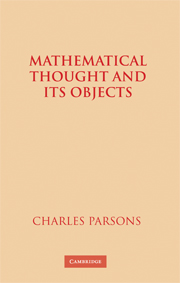4 - A problem about sets
Published online by Cambridge University Press: 24 November 2009
Summary
An objection
In the last section, we put aside the question whether sets should simply be an exception to a general structuralism about pure mathematical objects. Structuralism about sets is not immediately implied by what has been argued up to now, even the argument against eliminative structuralism in §17. Indeed we would save eliminative structuralism in application to other kinds of objects (such as those of pure geometry) by denying it here, although, to be sure, we would not thereby save eliminative structuralism as a program for eliminating all mathematical objects or even all pure mathematical objects. We still have to consider whether the universe of sets consists of more than a domain of “objects” related by relation called “membership” satisfying conditions that can then be stated in the language of set theory.
We can see the difficulty from our examination of how attempts to use the structuralist idea to eliminate reference to mathematical objects of various kinds founder when applied to higher set theory. Such attempts still require that one make out that a structure of the kind required is in some way possible. I argued in §17 that in the present state of knowledge, this possibility can be made out for higher set theory only by domains of pure abstract objects, of which pure mathematical objects are a paradigmatic instance. That this possibility be made out is, however, still required by the noneliminative structuralism of §18.
Information
- Type
- Chapter
- Information
- Mathematical Thought and its Objects , pp. 117 - 137Publisher: Cambridge University PressPrint publication year: 2007
